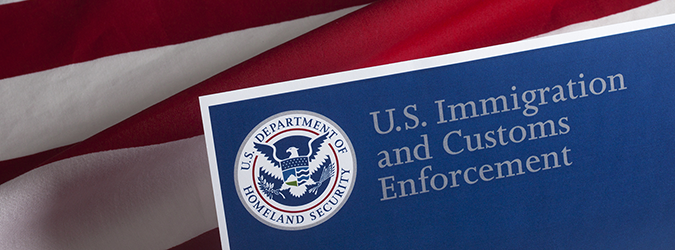Federal Immigration Policies Leave Workplaces in Flux
4.4.2025

Millions of immigrant workers in the United States face an uncertain future. On April 3, more than 100 lawyers attended a New York State Bar Association Continuing Legal Education course explaining the impact of that uncertainty on the workplace.
A Precarious Situation
Since Jan. 20, the administration has executed 220 policy actions directed at immigration programs including an Executive Order canceling Temporary Protected Status for people from Venezuela and Haiti. Temporary Protected Status allows people to stay and work in the United States when conditions in their home countries, such as war or environmental disaster, make it impossible to safely return.
On March 31, a federal judge blocked the order, allowing approximately 350,000 Venezuelans in the program to stay in the U.S. while the lawsuit proceeds.
“Many of these [Temporary Protected Status] designations are set to expire later this year,” said Lizbeth Chow, senior associate at Ogletree Deakins. “It’s very possible that the administration doesn’t have to do anything. Instead of proactively canceling designations, they may just let those designations lapse. And then because these individuals have already registered themselves and applied for benefits, they may be easily removable because the government already knows who [and] where they are.”
The administration has also acted to end the CHNV program, which allows people who are not citizens and come from Cuba, Haiti, Nicaragua and other countries to stay in the United States. Approximately 532,000 people are in the U.S. through this program.
A lawsuit challenging the termination of this program is pending.
Is Immigration Enforcement Allowed in Workplaces?
Complicating the removal of immigrants is confusion over where U.S. Immigration and Customs Enforcement, also known as ICE, is allowed to operate. Two police departments in New York State – Nassau and Rensselaer counties – have agreed to assist ICE through the 287(g) Program.
“Private spaces have a greater degree of legal protection than public spaces,” said Dana Lossia, partner at Levy Ratner. “So ICE agents cannot enter private spaces without either permission of the owner of that space or a valid warrant. Private spaces include your home, someone else’s home, and certain areas within workplaces.”
For example, in a restaurant, the kitchen is a private space because only employees go there, while the dining room is a public space. To avoid confusion, Lossia advised that employers clearly designate private spaces at their workplaces. Employers should also establish policy and procedures for a potential ICE visit to their premises.
Furthermore, there is a difference between a judicial warrant, which is signed by a judge, and an administrative warrant, which is signed by a Department of Homeland Security officer and does not give ICE authority to demand entrance to private areas.
“Without a valid judicial warrant, the ICE agents would need the express permission of the owner or manager of that place to enter,” said Lossia. “It’s not usually that easy for ICE to get a judicial warrant… It really is quite possible that ICE enforcement will be happening where ICE does not have a valid warrant to produce.”
Any misspellings or false information – such as an incorrect address or name – invalidate a judicial warrant.
The Labor and Employment Law Section and the International Section sponsored the program. View the full webinar here.






